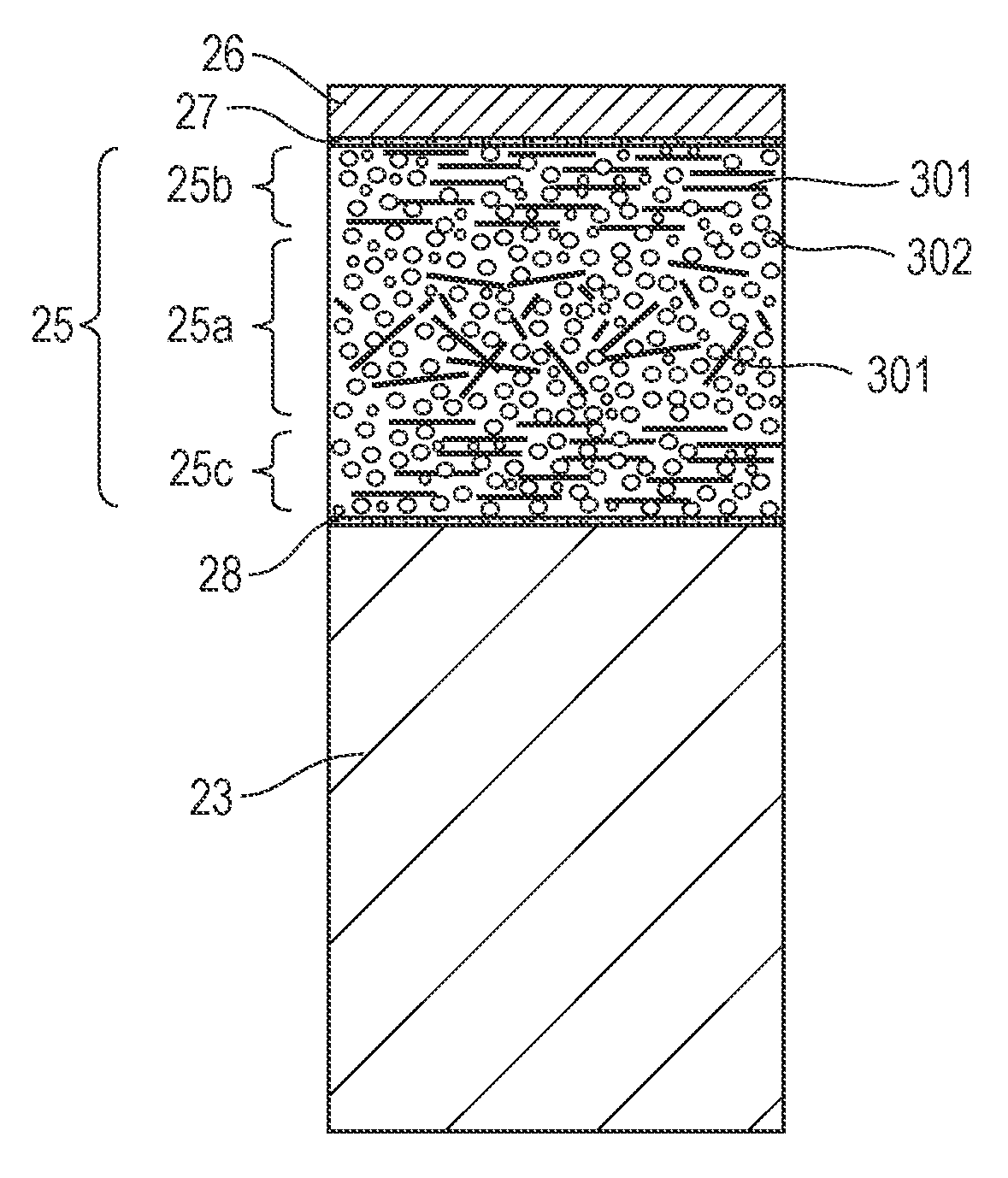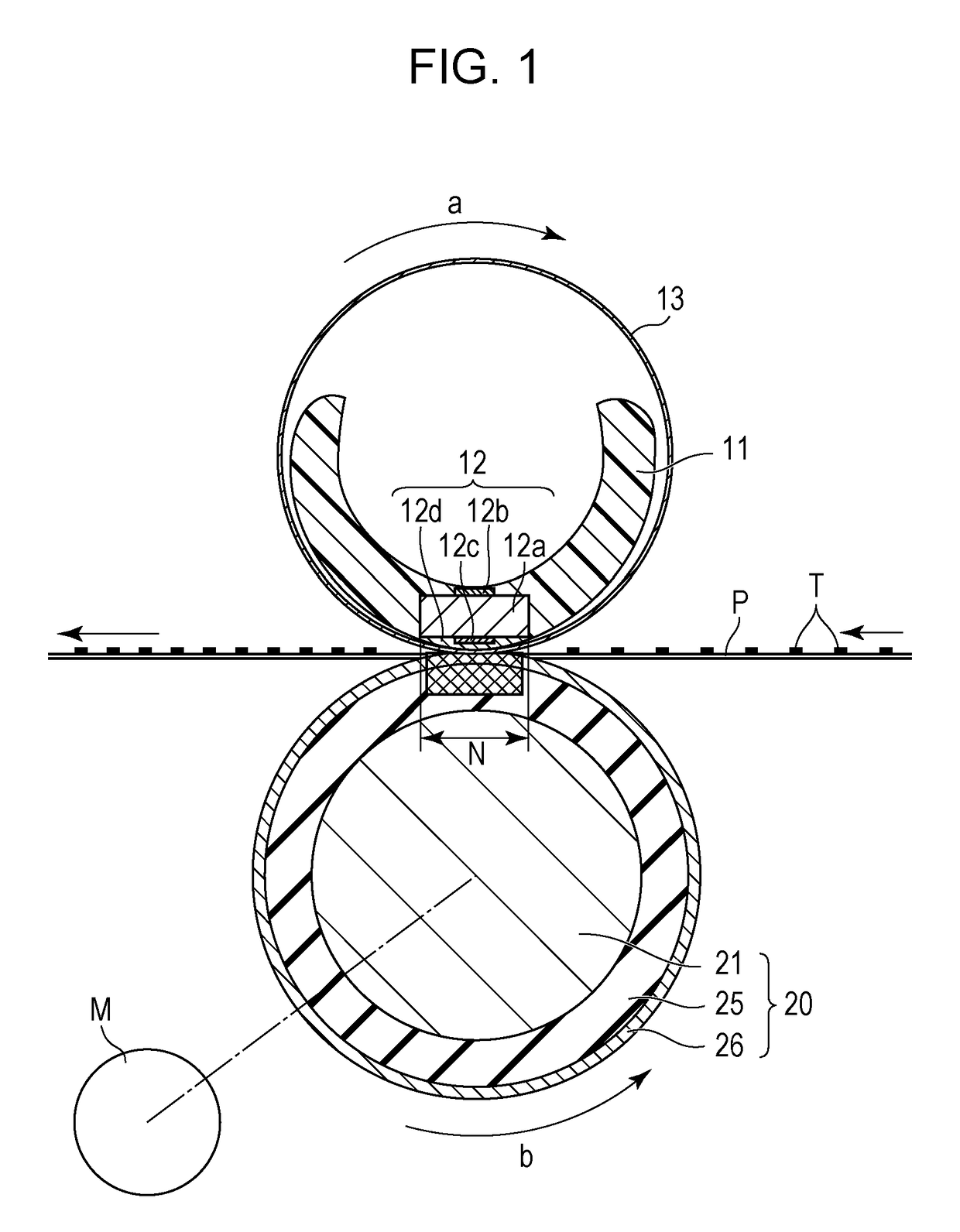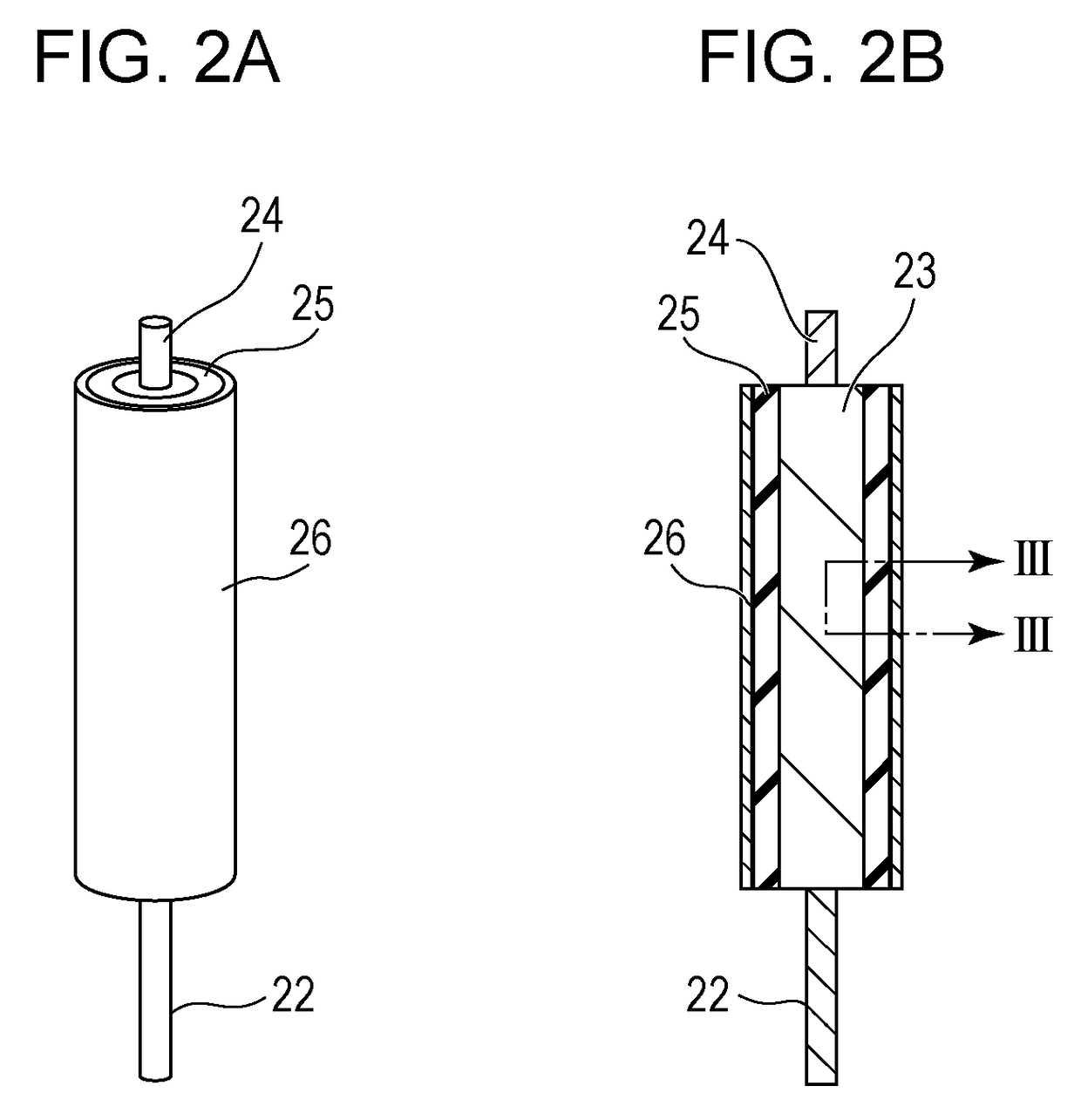Elastic roller with needle-shaped filler and fixing device
a technology of filler and filler, which is applied in the direction of electrographic process apparatus, instruments, optics, etc., can solve the problems of accelerating “temperature rise in a non-, accelerating temperature rise, preventing temperature rise, etc., to maintain the shape, prevent temperature rise, and maintain the effect of rapid start-up
- Summary
- Abstract
- Description
- Claims
- Application Information
AI Technical Summary
Benefits of technology
Problems solved by technology
Method used
Image
Examples
example 1
[0125](1-1)
[0126]The PFA tube was fixed in the cylindrical mold by a well-known method in the extended state. The PFA tube and the cylindrical mold were visually confirmed as being closely attached to each other.
[0127](1-2)
[0128]A primer (trade name of DY39-067, manufactured by Dow Corning Toray Co., Ltd.) was applied to the inner surface of the PFA tube described in (1-1) by a well-known method and left as it is at the room temperature for a predetermined period of time so as to be dried.
[0129](1-3)
[0130]A primer (trade name of DY35-051, manufactured by Dow Corning Toray Co., Ltd.) was applied to the mandrel by a well-known method, fired for a predetermined period of time at 200° C., and then left so as to be cooled.
[0131](1-4)
[0132]The nozzle was attached to the pipe of the device illustrated in FIG. 4 using an adaptor and the mandrel described in (1-3) was perpendicularly fixed to the mandrel fastening portion of the nozzle. The cylindrical mold to which the PFA tube described in...
example 2 to example 8
[0141]Elastic rollers were obtained in the same manner as described in Example 1, except that the mandrel, the type of emulsion, and the injection rate of the emulsion were appropriately selected and the emulsion was injected while the thickness of the cavity, the average flow rate of the emulsion, and the viscosity of the emulsion were changed in accordance with the conditions described in Table 2.
[0142]The average flow rate (mm / s) was calculated by the following formula (2):
average flow rate (mm / s)=injection volume of liquid compound into cavity per minute (mm3 / s) / area of cross section of cavity (mm2) Formula (2).
[0143]Elastic rollers were obtained in the same manner as described in Example 1, except that the mold, the mandrel, the type of emulsion, and the injection rate of the emulsion were appropriately selected and the emulsion was injected while the thickness of the cavity, the injection rate, and the viscosity of the emulsion were changed in accordance with the conditions d...
PUM
 Login to View More
Login to View More Abstract
Description
Claims
Application Information
 Login to View More
Login to View More - R&D
- Intellectual Property
- Life Sciences
- Materials
- Tech Scout
- Unparalleled Data Quality
- Higher Quality Content
- 60% Fewer Hallucinations
Browse by: Latest US Patents, China's latest patents, Technical Efficacy Thesaurus, Application Domain, Technology Topic, Popular Technical Reports.
© 2025 PatSnap. All rights reserved.Legal|Privacy policy|Modern Slavery Act Transparency Statement|Sitemap|About US| Contact US: help@patsnap.com



